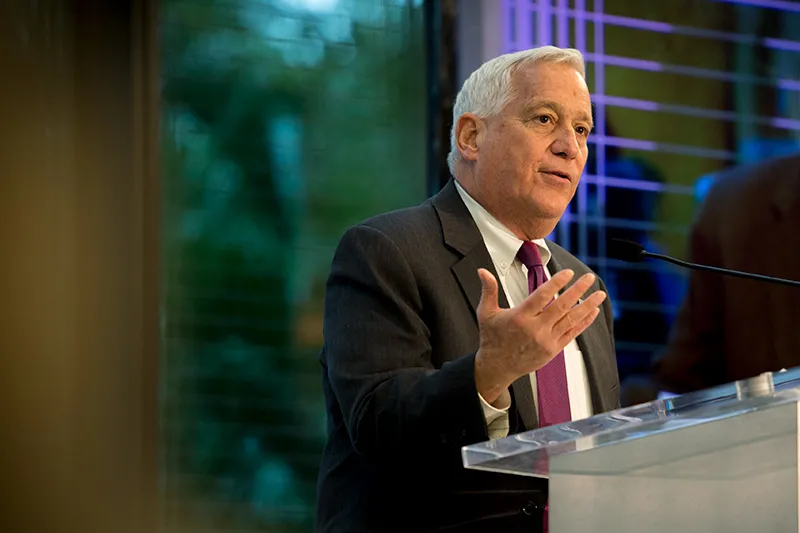
How is the digital revolution changing our lives? This is the leading question guiding School of Liberal Arts professor Walter Isaacson’s new history course this spring. Tracing the earliest concept of a general-purpose computer Ada Lovelace developed in the 1830’s to Mark Zuckerberg inventing social networks, “The Digital Revolution” challenges students to approach their relationship to the digital world as living history.
“The digital revolution has been as transformative as the industrial revolution and the scientific revolution, but the cool thing is, we’re living through it,” Isaacson explained. “History is about change—why it happens, who causes it, and who resists it. I want to connect history to the digital revolution we’re going through so people better understand the forces of change.”
While landmarks such as the invention of the computer and the internet, as well as recent moments such as Zuckerberg’s hearing with the Senate Judiciary Committee, guide the discussions in class, students are also asked to engage directly with the course topics in experimental ways. For example, Isaacson asks students to download their privacy data from all social networks so they can see exactly what information people and companies are collecting. For another assignment, students choose a piece of digital history, such as how Facebook defeated MySpace, and create a chronological, analytic narrative using primary and secondary resources, and perhaps interviews. In essence, students are writing history.
“We’re also looking at how innovation is really a team sport. The three greatest innovations of the digital revolution were the computer, the microchip, and the internet, and none of them had single inventors—they were all invented in a collaborative way,” said Isaacson. “So we really explore what it means when most innovation comes from building teams of people.”
Isaacson, who has written about innovators from Benjamin Franklin to Steve Jobs, will also explore important contemporary topics of the digital world such as questioning if machines can think, the future of machines, and how social networks are changing politics and media before our eyes. He also presents each student with a tiny transistor to launch a discussion on our relationship with technology—a symbol for being able to turn something on and off in a very physical way. “We become alienated from our technology when we don’t understand what’s inside,” Isaacson commented.
Ultimately, in “The Digital Revolution,” Isaacson encourages his students to be curious. “The greatest innovators of our past all share the qualities of Leonardo da Vinci, which is being able to see the patterns that exist across the humanities, the arts, and the sciences. Da Vinci was curious to know everything that could possibly be known about every subject that was knowable, whether it was art or anatomy or zoology or engineering. His notebooks are filled everyday with questions he asked, what he learned, and sketches he made. He was able to appreciate the beauty of a line of poetry and the beauty of a mathematical equation. People who are interested in a wide variety of topics tend to be the most creative.”

